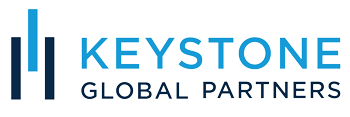This article was originally published on Techcrunch.com on July 20, 2019. This article is part 1 of a 3 part series about selling company stock. Written by Peyton Carr.
Companies like Uber, Lyft, Beyond Meat, Peloton, Slack, Zoom, and Pinterest all made their public market debuts in 2019, creating wealth and liquidity for many of the 2019 IPO class of founders.
However, this year stockholders have seen anxiety-inducing volatility in their holdings, and many realize that they need to rethink their approach to their concentrated post-IPO stock position.
In this guide, I’ll walk through a framework of how to think about post-IPO or concentrated stock holdings objectively. While this is written specific to public company stock, many of the same fundamental concepts apply to private stock and the decision whether or not to sell. Some risks should be understood if you are relying on one stock to achieve all of your financial goals since that subjects you to having ‘too many eggs in one basket.’ Many shareholders in the 2019 IPO class have experienced this risk over the last few months and are reevaluating their situations.
Nevertheless, following my advice may be challenging since we all have heard of someone who made it big by swinging for the fences. The key is understanding the true success rate and risks involved with this approach; it is all too common to hear others share their standout victories, while more common failures are rarely mentioned.
What Do I Do Now?
Usually, I advocate for reducing concentrated positions in IPO stock upon lockup expiration, or via scheduled selling for more significant positions; however, for those that have not sold, it is clear that the unexpected macroeconomic downturn has materially increased the volatility of some high-valuation company share prices. If you find yourself in this position here are a few items to consider:
- What is your time horizon? Are your investments intended for the long-term or the short-term?
- What are your liquidity needs? Do you need to raise cash to pay for taxes or upcoming expenses? Do you need cash in the upcoming 1-2 years?
- What other assets do you have?
- How does this impact your financial plan? Can you tolerate possible further declines?
It is not comfortable to be in this position, and decisions at this juncture can be critical in achieving long-term goals. I suggest you find an advisor to talk to if you are unsure what the best choice is. Below we review some considerations which can help build more confidence in your decision.
What’s the Plan?
The decision of what to do with your stock should start at a higher level. Where does this stock fit into your investment strategy, and where does your investment strategy fit into achieving your long-term goals?
Your goals should drive your investment strategy, and your investment strategy should drive the decisions regarding your stock, not the other way around. With the proper goals set, you can use the investment portfolio, and the company stock(s) within it, as tools to achieve your goals.
For example, a goal could be to work ten more years, then partially retire and do some consulting. Defining goals helps you make objective decisions on how to best manage concentrated stock positions. There is a trade-off between maximizing the potential return in your investment portfolio, by maximizing risk with concentrated portfolios, and minimizing the risk of a catastrophic loss, by having a well-diversified portfolio. This decision is unique to each individual. The best way to maximize the odds of achieving your goals is different from the best route to maximizing your portfolio’s return possibilities.
FOMO
In these discussions, there is always an immense fear of missing out. What if this stock becomes a multi-bagger over time? It’s easy to look to the Zuckerbergs and Bezos of the world, who have amassed great wealth through holding concentrated stock, and think that holding a concentrated stock for the long term is the way to go.
There is also no doubt some public stocks have been runaway financial home runs, like investing in Apple or Amazon. If you had invested in those stocks since the beginning, you could have earned a 40,000% or 100,000% return. However, a rational, evidence-based decision process presents a very different picture. A statistical analysis on how IPOs and concentrated portfolios have fared in the past is covered in part two of this three-part series.
Concentration involves risks you may not have considered. In part two, I will walk you through critical considerations when maintaining a high concentration of company stock, and things to consider from a big-picture perspective. I also dive into the benefits of diversification, taking it beyond the basics to show you the advantages of having a more balanced portfolio.
You will get an in-depth guide that covers how much stock to hold, when to sell, strategic approaches to take, and tax implications to consider.
The information and opinions provided in this material are for general informational purposes only and should not be considered as tax, financial, investment, or legal advice. The information is not intended to replace professional advice from qualified professionals in your jurisdiction.
Tax laws and regulations are complex and subject to change, and their application can vary widely based on the specific facts and circumstances involved. Any tax information or advice in this article is not intended to be, and should not be, used as a substitute for specific tax advice from a qualified tax professional.
Investment advice in this article is based on the general principles of finance and investing and may not be suitable for all individuals or circumstances. Investments can go up or down in value, and there is always the potential of losing money when you invest. Before making any investment decisions, you should consult with a qualified financial professional who is familiar with your individual financial situation, objectives, and risk tolerance.
